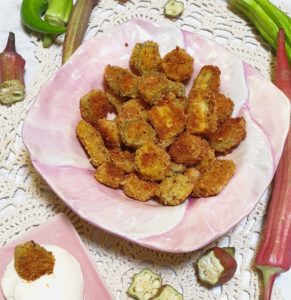Fruit trees grown in every climate can benefit from a mulch of some description. Mulch is a layer of material (usually organic) applied to the surface of soil which looks attractive and benefits the plants it covers. Mulch adds nutrition, helps protect the root zone, limits damage done by extreme weather and makes mowing maintenance easier. Here I will explain in detail how to rejuvenate & mulch your fruit trees.
Fruit trees need to be revitalised regularly, but if you’ve suffered through an extreme weather event*, it’s vital that you rejuvenate your fruit trees as quickly as you can. This is true no matter what your climate, season or circumstances. Most trees can still reward you with a good crop if attended to promptly after extreme weather.
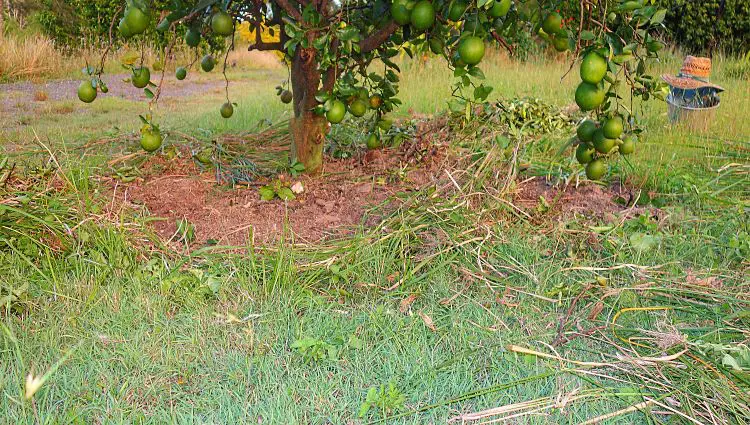
Getting Started
Firstly, prune the lowest branches, so that the leaves are at least 30cm (12″) off the ground. (Side note- try to grow them down to that level as the shading keeps the soil in good condition).
Next, remove all weeds and grass from around the base of the trunk. I use a two-pronged weeding fork to help me lever them out, roots & all. Set these weeds aside as you’ll be using them shortly.

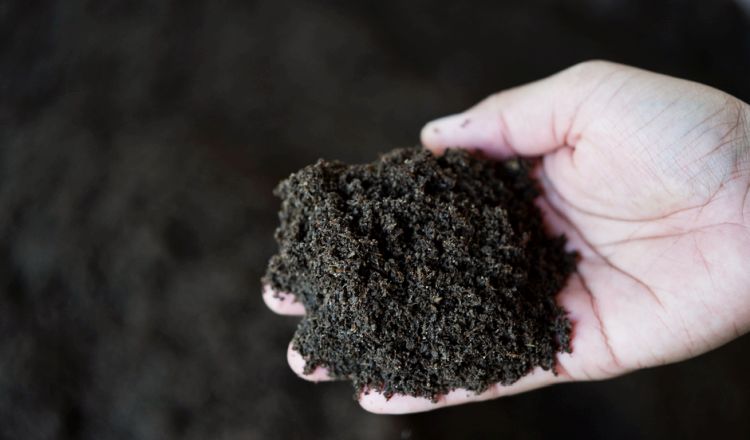
Add some nutrition to the soil. You can spread some compost and/or slow-release fertiliser then gently rake it in. Be careful not to disturb the feeder roots, and water it in if the soil is dry. A couple of buckets of compost plus a handful of fertiliser per tree is adequate.
Sprinkle some blood and bone (bonemeal) on the soil. Blood and bone is a powdered slow-release fertiliser which gives a good general boost to most plants and trees. A light dusting is enough, and will last for several months. Putting blood and bone under green uncomposted prunings (see next step) provides nitrogen & heat for this onsite composting process.

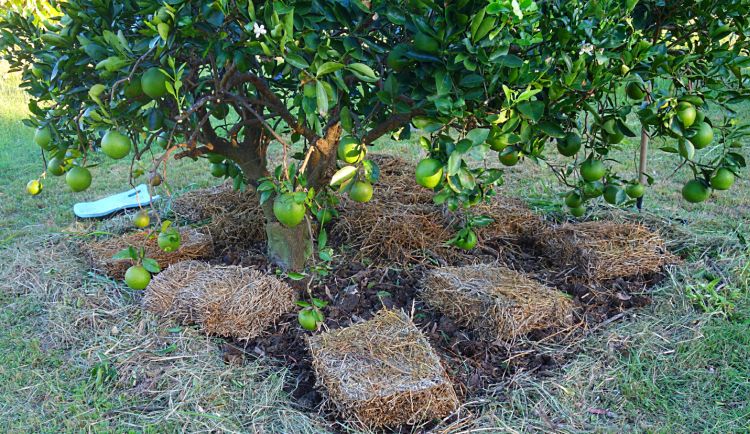
Composting Onsite
Now it’s time to use those weeds you just pulled up. The ideas is to create a new layer of fresh soil under the drip line. This is where most of the feeder roots are, so it’s important to keep this zone in good health. The weeds and grass you’ve pulled out accessed the soil fertility where they first grew, so now you’re going to recycle those nutrients back into the soil.
Next, cover the rest of the soil under the tree. Make it 5cm (2″) thick (thicker if you are going into a cold winter or blazing hot summer). Thee are a number of materials you can use for this top layer. Spoiled lucerne, yellow hay, dried & chipped tree prunings, and aged cow or horse manure are all good choices. If you can’t access any of these, then a thick layer of woodchips can be used.
This layer, along with the fine compost and slow-release fertiliser, will feed your tree for most of the year. Most of the nutrition will come from the compost and fertiliser, with the mulch layer giving some fertility but mainly serving to hold in moisture. To specifically feed flowers and fruit later on in the growing season, you can apply a specialised or liquid fertiliser.

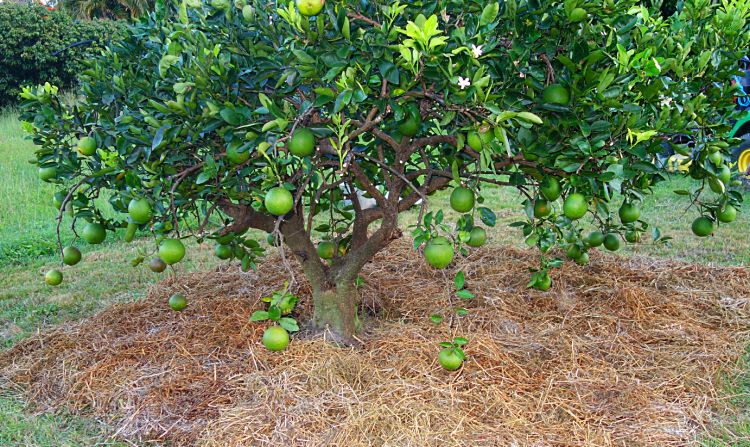
Tips to Remember
No matter what sort of mulch you use, you need to do these key things for good results.
- Always keep the mulch 20-30cm (8-12″) away from the tree trunk. This helps prevent collar rot & the rootstock from shooting.
- Extend the mulch right out to the dripline. That’s where most of the roots are, although they can go further. Extending the mulch further out than the dripline also makes mowing easier.
- The ideal mulch thickness is 10-20cm of dense mulch. Any thicker, and the soil can’t breathe. If using a particularly light mulch (like dried leaves) it can be deeper, as air will still be able to circulate through it. Dense mulch like woodchip or gravel should only be a maximum of 10cm because these materials block airflow.
- If your summer is dry, make your mulch layer 30cm thick to protect the feeder roots from sun extremes at the beginning of the season. When your summer is wet, keep the mulch 10cm thick so that excess moisture can evaporate.
- If you have a cold winter where the soil temperature stays below freezing, use the two-layer technique of compost and hay followed by coarse woodchip over the top.

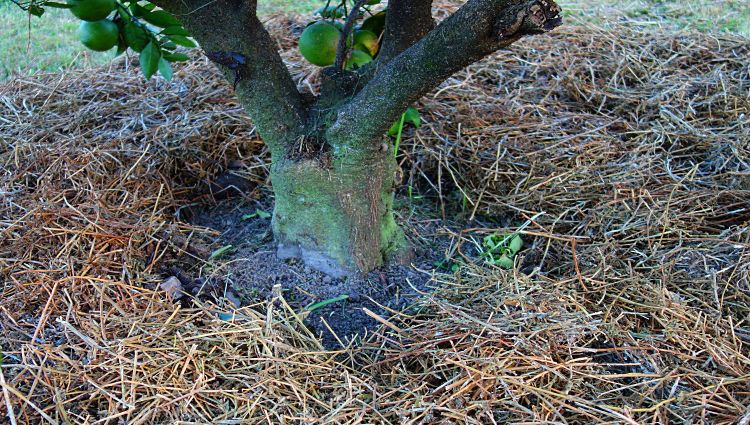
*The year 2022 has not been kind to many readers who live in the eastern states of Australia. Weather-wise, far too many farms, homes and gardens suffered significant flooding during March. There has been loss of homes, possessions, gardens and even human life. My heart goes out to those affected by the weather extremes. I sincerely hope you’ve had the luck to withstand the onslaught. It’s very sad that even weeks after flood events, many people still have floodwaters on their properties. Some, particularly in northern New South Wales, have been inundated two and three times, and still can’t get to their homes.




